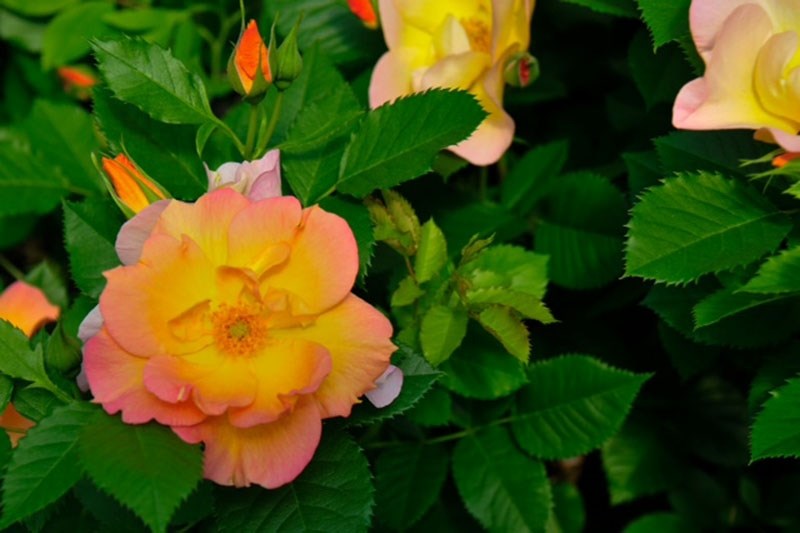Everyone loves a rose – the intoxicating smell and delicately layered bloom is the stuff of poetry, a symbol of love and beauty. According to theflowerexpert.com, roses have enjoyed the honour of being the most popular flower in the world, likely to due to the varieties of colour, size and fragrance.
Local gardeners can grow many different types of roses – St. Albert is a plant hardiness zone 3 – so hardy shrub roses do well, but hybrid teas, grandifloras, floribundas, miniatures and English roses are tender roses that can perform here too, with good winter protection.
“I have an eight-foot tall old variety – the Therese Bugnet shrub rose – that’s vigorous and grows on its own roots, not a graft,” said local gardener Derrick Harrison, who has been tending to gardens for well over 50 years. “That variety is disease-resistant, it only needs plenty of sun and water.”
Patricia Bell, long time volunteer with the St. Albert Botanic Park, said that contrary to belief, roses are not hard to grow. They need a minimum of six hours of sun a day – the more the better – and daily watering. Once established, even tender roses can often tolerate Alberta conditions with the proper winter protection.
“Canada does a good job with hardy shrubs and hybrids, and our cooler central Alberta weather is actually nicer for roses,” Bell said. “We can enjoy them longer when they bloom. People get scared of roses – how to plant and prune them, but once you harden them off like you do with a bedding plant, they’re extremely forgiving.”
Bell recommends planting so that the graft union is four to six inches below the soil surface, and pruning back to about five strong canes each year when an already-established plant is dormant – tips to help roses survive and thrive. “Keeping roses watered daily and fed with a 20-20-20 fertilizer every couple of weeks will also make a more disease-resistant, better-performing product,” she said.
Are you having success with your garden roses? Want to see what others are able to grow? The St. Albert Botanic Park is calling all roses gardeners, from first-time growers to veterans, to take part in the annual rose show, Sunday July 20 at the botanic park on Sturgeon Road. Even complete beginners can bring in a long stem of their prettiest, best-growing rose and exhibit it in the show. Registration is free (8:30 to 10:30 a.m.), with judging to follow until noon. The park will be open through the afternoon for the public to enjoy the sights and fragrances of the exhibits, and see prizes awarded at 4 p.m.
“Entries were up last year, but we’re really encouraging anyone – even if they have just one plant – to bring it down,” said Bell, reminding that park volunteers will be on hand to answer questions and assist with entries. “It doesn’t need to be perfect at all, it’s just a lovely way to spend a summer afternoon, and to celebrate the rose.”
St. Albert Botanic Park marketing assistant Karlee Yoshinaka said roses will be judged in several categories, including hybrid tea, floribunda, miniature, shrub, best in show, and best aggregate (most points). “People can always come to the park to learn about pruning, exhibiting and growing,” she said. “And hopefully this show will highlight to gardeners what’s possible with roses in our climate. We want people to come and be part of it.”
A thorny tale
• A rose is a woody perennial with over 100 species of shrubs, climbing or trailing plants<br /><br />• Roses are grown across the world, but the Netherlands is the world's leading exporter of roses<br /><br />• The English were cultivating and hybridizing roses in the 15th century. Tudor Henry VII, winner of the English War of the Roses, created the Rose of England (Tudor Rose) by crossbreeding other roses.




